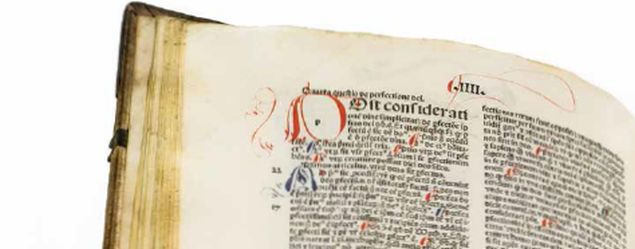
Commentaries on the Exhibit’s Works
Files
Download Commentary (262 KB)
Description
A brief commentary prepared by Miriamne Ara Krummel, PhD, Associate Professor, English, on the following work:
J. R. R. Tolkien
The Lord of the Rings
London, ca. 1953-1955; page proofs of the first edition with author’s final revisions; binding by Don Glaister
Permission Statement
This item and all others in the Imprints and Impressions collection are licensed for research, educational and private use. Proper attribution must be used when downloading or reproducing this content. If you wish to use the materials for other purposes, please contact University of Dayton Libraries to obtain permission: 937-229-4221.
Contents of Streaming Media
Miriamne Ara Krummel, associate professor of English, explores the connections between J.R.R. Tolkien’s creative writing in the Lord of the Rings trilogy and his scholarly contributions to the field of medieval studies.




Comments
In 1925, the medievalist John Ronald Reuel Tolkien, as the new Rawlinson and Bosworth Professor of Anglo-Saxon at Pembroke College, University of Oxford, suddenly had time and space to explore what son Christopher Tolkien called “the rising of new imaginative horizons.”
To indulge these new horizons, though, Tolkien had to abandon work on his epic poem The Fall of Arthur and his prose translation of Beowulf, one of his greatest loves.
Even so, Beowulf continued to frame not only Tolkien’s teaching, but also his scholarship and his fiction. He opened his Old English classes with the word “Hwat!” or Listen!—the first word in Beowulf. Scholars today still study his essay “‘Beowulf’: The Monsters and the Critics,” about the reception of the monsters in Beowulf. But perhaps most important … Beowulf had orcs. To wit, the scop [poet] of Heorot [the great hall in which the Danes and Geats meet, eat, and celebrate] weaves this yarn about Grendel’s birth:
[For this crime* Metod makes mankind deal with this murderous foe
From him all the evil beings arose,
Eotenas and elves and orcs,
Such giants, that with God contend
For a long time; for that he repays him this reward.]
(trans. Krummel)
*Cain’s slaying Abel
And thus were born Tolkien’s orcs of The Hobbit and The Lord of the Rings.
On display are Tolkien’s page proofs of the first edition of The Lord of the Rings with his final additions, corrections, and deletions throughout; added material about runes; and a signed presentation inscription. Binding is by Don Glaister, acclaimed book binder and conservator.